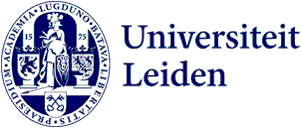Children: peace, equality & dignity
On World Children’s Day, in a world marked by fragility and fragmentation, we are reminded that peace, equality and human dignity cannot be fulfilled without the realisation of children’s rights.
In October, the United Nations (UN) turned eighty. Born out of the destruction of two world wars, the UN was created to ‘maintain international peace and security’, and to reaffirm ‘faith in fundamental human rights, in the dignity and worth of the human person, and in the equal rights of men and women’ (Preamble of the UN Charter 1945). Eight decades later, these founding ideals are under strain.
The Convention on the Rights of the Child (CRC) remains the most universally ratified human rights treaty in history. It translates the UN’s founding aspirations into a concrete framework for how societies should treat their youngest members: with respect, fairness, and justice. In doing so, it provides a moral and legal roadmap for rebuilding international solidarity in a divided world.
Children’s rights: The foundation of peace, equality and human dignity
Children’s rights are not a separate agenda, they are the living expression of peace, equality, and human dignity. The CRC envisions a world in which every child can grow up free from violence, discrimination, and deprivation and develop fully and harmoniously. A world where children’s voices are heard and taken seriously in decisions that affect them. These principles go beyond protection of the most vulnerable; they foster the very conditions for sustainable peace, equality and human dignity.
Societies that invest in children’s rights, through education, inclusion and justice, are more resilient, cohesive, and democratic. Conversely, where children are marginalised, denied participation, or subjected to injustice, social inequality and conflict deepen. Ensuring children’s rights, therefore, is not merely a moral duty but a pragmatic strategy for peacebuilding and development. At its core, the CRC is a pathway for equality (Article 2), not only between children and adults, but among children themselves, regardless of gender, origin, or circumstance. Equality means that no child’s future is predetermined by where they are born, what they look like, or who their parents are.
Yet, children’s rights are being eroded in real time. Across the world, children are caught in the crossfire of war, from Gaza to Sudan, Ukraine to Myanmar. Millions face violence, displacement, exploitation, and the loss of education and safety, online and offline. On top of this, the willingness of States to cooperate beyond their borders and in solidarity with all children has decreased. When the world turns away from its collective duty to protect children, it turns away from its own future.
The UN’s 80th anniversary invited sober reflection on the state of multilateralism. Many of the institutions designed to uphold human rights are facing paralysis, budget cuts, and political interference. The 100th session of the UN Committee on the Rights of the Child, scheduled for September 2025, was postponed until further notice. Authoritarianism is on the rise, and human rights defenders, including children and young people, face unprecedented risks. In this climate, human dignity, once regarded as the shared moral foundation of international law, is increasingly contested and politicised.
Gran notes that dignity is both inherent and relational, rooted in each person’s intrinsic worth and its recognition by others and institutions (pp. 143–144, 150–154). Rights make dignity visible and enforceable, yet when they cannot be exercised, a ‘dignity gap’ arises between legal promise and lived reality. Today’s growing conflicts and inequalities widen this gap, determining whose rights are realised and whose are overlooked. The CRC’s emphasis on dignity reflects its ambition, dignity as value, practice, and condition, but implementation remains uneven, especially where instability undermines the rule of law and deprioritises children’s rights.
Realigning our role: Serving peace, equality and dignity through children’s rights
World Children’s Day 2026 is not just an occasion for reflection; it is a call to realign. Eighty years after the founding of the UN, we are challenged to ask not simply what more can we commit to, but how we can redefine our roles in a world where peace, equality, and dignity are increasingly fragile.
Every government, institution, and individual has a part to play in realigning priorities towards the realisation of children’s rights. For States, this means translating legal obligations into real protection, participation, and justice for children, as part of a collective duty towards children as rights holders. For international bodies, it means placing children’s rights at the centre of peacebuilding, humanitarian action, human rights monitoring and sustainable development. For universities and researchers, it means using knowledge, evidence, and advocacy to drive systemic change, through research, education and outreach.
Realignment requires courage, the courage to confront entrenched interests, to question short-term politics, and to measure progress not in speeches but in the lives of children. It requires us to see children not as beneficiaries of charity or protection, but as rights-holders and moral equals whose well-being defines the legitimacy of our global order.
In the words of the CRC’s preamble, children should grow up ‘in an atmosphere of happiness, love and understanding’. That aspiration is not merely sentimental, it reflects a world that respects children’s rights and in doing so sustains peace, equality, and human dignity for all.
This blog is written on behalf of the Department of Child Law and Health Law and the UNICEF Chair in Children’s Rights at Leiden University.




0 Comments
Add a comment